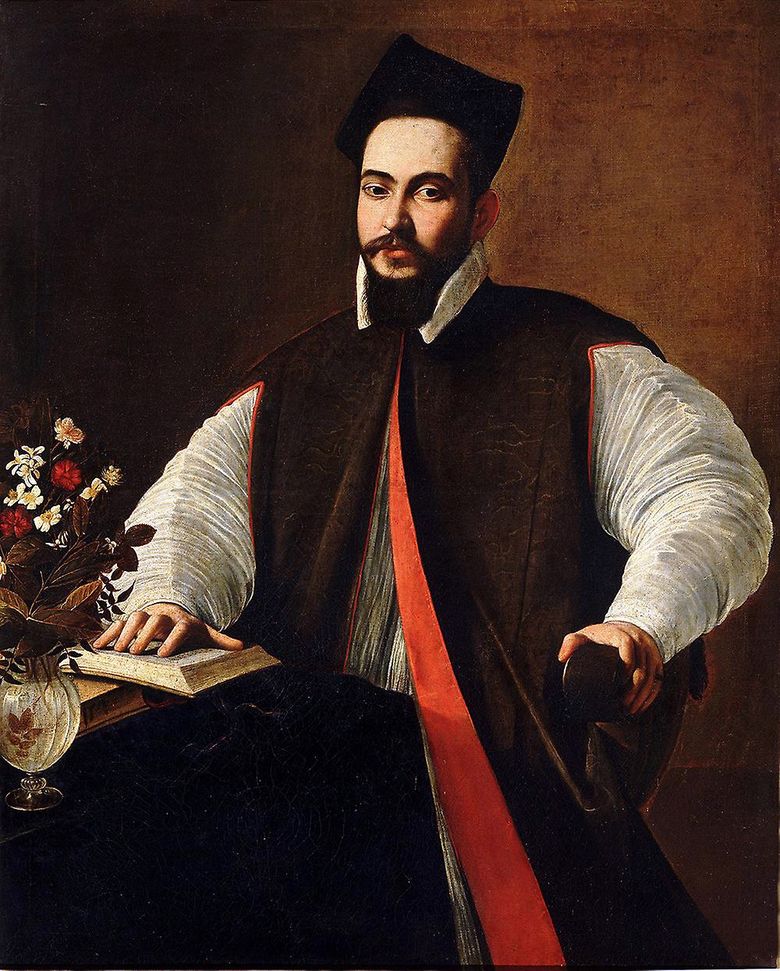
Painting of the Italian painter Caravaggio “Maffeo Barberini”. The size of the portrait is 110 x 84 cm, canvas, oil. Maffeo Barberini came from a noble Florentine family; was born in 1568. In the mid-90s of the 16th century, Maffeo Barberini was ordained to the rank of Archbishop of Nazareth, then in 1606 received a cardinal in Spoleto.
Consisting of the envoy of the Vatican Church and fulfilling the duties of the apostolic nuncio in Paris, contributed to the return of the Jesuits. Fearing the excessive strengthening of the Habsburg home as a result of the victories of Emperor Ferdinand II, Urban VIII joined France, supported Richelieu in his struggle against Austria and Spain, calmly reacted to Sweden’s interference in the affairs of Germany. Trying to raise his family, Maffeo Barberini, being already Pope Urban VIII, led in 1641, due to the principality of Castro, an unsuccessful war against Parnese Farnese.
The duchy of Urbino in 1636, after the termination of the house Rovere, fell under the authority of the papal throne. Urban VIII resumed the bull “In coena Domini”, corrected “Breviarium romanum”, established in 1627 the board of Propaganda. Pope Urban VIII cursed the Galilean system and organized an inquisitorial process that culminated in the conviction of Galileo in 1633, and later in 1642 condemned Jansenism in his bull “In eminenti”. His “Poemata” – Latin hymns, odes and epigrams – were published in Rome and Paris, along with some early Italian poems by Maffeo Barberini. The works of Urban VIII were reissued in Oxford in 1726.
 Maffeo Barberini, futur pape Urbain VIII – Michelangelo Merisi da Caravaggio
Maffeo Barberini, futur pape Urbain VIII – Michelangelo Merisi da Caravaggio Maffeo Barberini, el futuro papa Urbano VIII – Michelangelo Merisi da Caravaggio
Maffeo Barberini, el futuro papa Urbano VIII – Michelangelo Merisi da Caravaggio Martyrdom of St. Matthew by Michelangelo Merisi and Caravaggio
Martyrdom of St. Matthew by Michelangelo Merisi and Caravaggio Fortune-teller by Michelangelo Merisi da Caravaggio
Fortune-teller by Michelangelo Merisi da Caravaggio Mary Magdalene by Michelangelo Merisi and Caravaggio
Mary Magdalene by Michelangelo Merisi and Caravaggio The sacrifice of Isaac by Michelangelo Merisi and Caravaggio
The sacrifice of Isaac by Michelangelo Merisi and Caravaggio Confidence of Thomas by Michelangelo Merisi and Caravaggio
Confidence of Thomas by Michelangelo Merisi and Caravaggio Narcissus by the stream by Michelangelo Merisi da Caravaggio
Narcissus by the stream by Michelangelo Merisi da Caravaggio